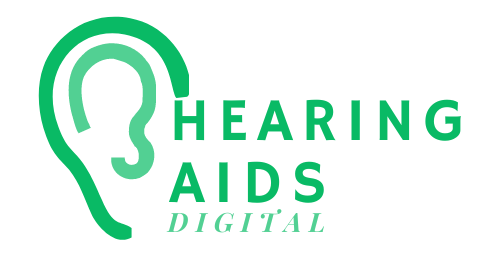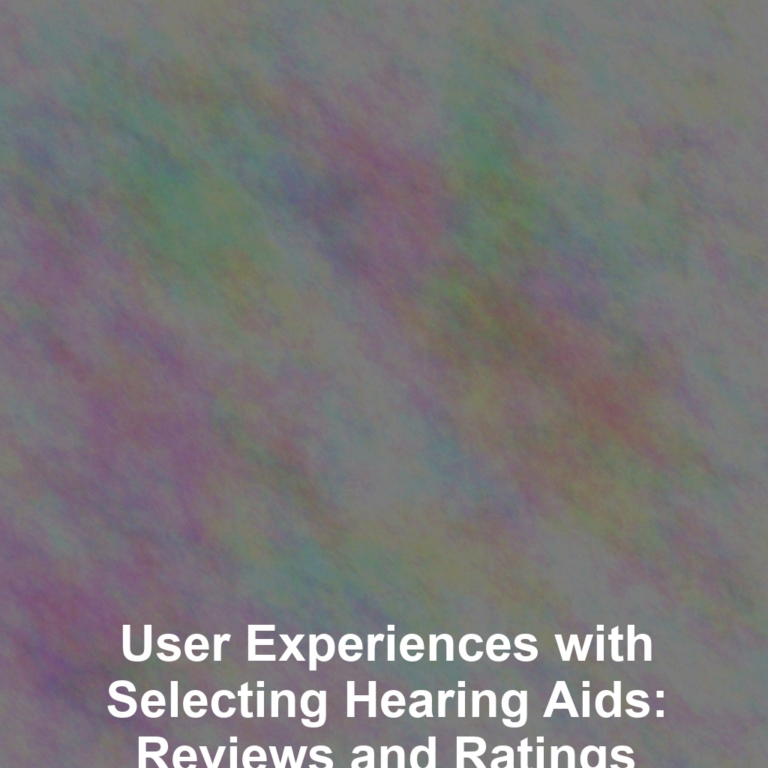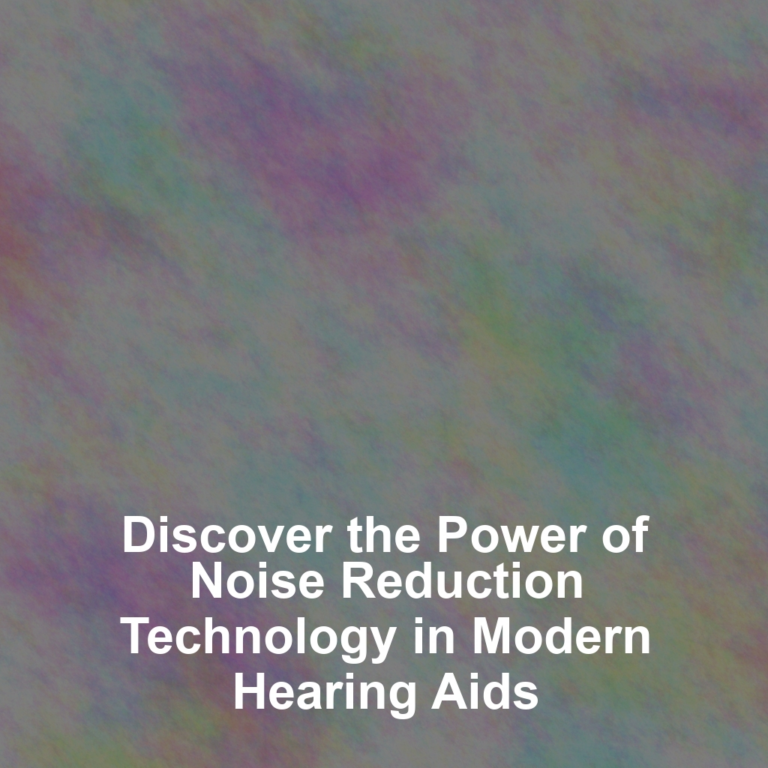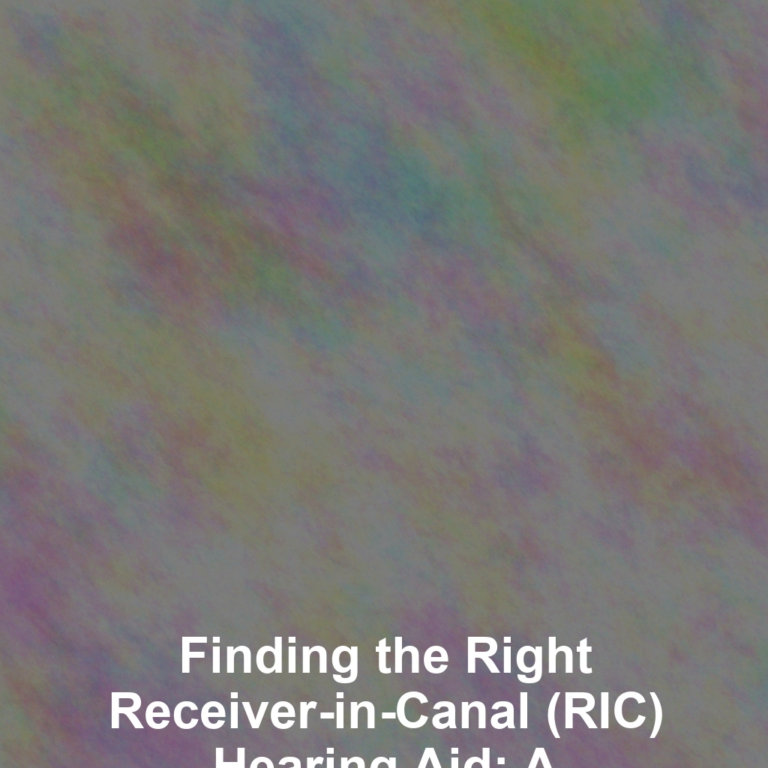Last Updated on 22/08/2025 by Admin
Exploring the Consequences of Music and Sound Exposure on Auditory Well-being
How Does Prolonged Exposure to Loud Music Impact Hearing Health?
Extended exposure to loud music poses a serious threat to auditory health, leading to potentially irreversible hearing damage. It is imperative for musicians to grasp the intricate mechanics of how this occurs. The auditory system, particularly the delicate hair cells located in the cochlea, is exceptionally susceptible to harm from elevated sound pressure levels. When these hair cells are subjected to excessive sound, they can become overstimulated and ultimately perish over time, resulting in permanent hearing loss. This alarming reality highlights the urgent need for sound management practices within the music profession to protect and preserve auditory health.
Several key factors contribute to hearing damage, including:
- Sound intensity: Elevated decibel levels significantly heighten the risk of auditory damage.
- Duration of exposure: Longer exposure times are directly correlated with increased levels of hearing loss.
- Frequency range: Specific frequencies can inflict greater damage compared to others.
- Individual susceptibility: Genetic predispositions and pre-existing health conditions can affect one’s vulnerability to hearing impairment.
- Recovery time: Insufficient rest periods between exposure can exacerbate the risk of damage.
- Type of sound: Continuous exposure to certain types of sounds can be particularly hazardous.
By understanding these crucial factors, musicians can proactively implement measures to effectively safeguard their hearing.
How Do Volume Levels Differ Across Various Music Genres?
Various music genres pose distinct challenges to auditory health, as the volume levels can fluctuate dramatically across different styles. For instance, genres such as rock, electronic, and pop often feature loud soundscapes during both live performances and studio recordings, frequently exceeding the safe listening threshold of 85 decibels. Conversely, genres like acoustic music or classical music may exhibit lower average volumes; however, the dynamic range can still present risks, especially during intense climactic passages.
Musicians who perform in high-energy venues, such as nightclubs or festivals, are particularly vulnerable due to consistently high sound levels. Moreover, the design and acoustics of performance spaces can amplify sound, further elevating the risk. For example, musicians in small, intimate settings may encounter different auditory challenges compared to those performing on expansive stages equipped with sound systems designed to accommodate large audiences.
To effectively manage these risks, it is essential for musicians to understand the typical volume levels associated with their specific genres. This knowledge can empower them to adopt protective strategies tailored to their environments. Those engaged in louder genres should be particularly diligent in their hearing protection practices.
What Role Does Sound Equipment Play in Safeguarding Hearing Health?
The type and quality of sound equipment utilised by musicians play a significant role in determining the risk of hearing loss. High-quality sound systems can deliver clearer audio at lower decibel levels, enabling musicians to hear themselves and their fellow performers without straining their ears excessively. In contrast, inferior equipment may cause sound distortion, prompting musicians to increase volume levels, thereby elevating their exposure to damaging sound levels.
For example, during live performances, it is crucial for musicians to ensure that amplification systems are properly calibrated to avoid excessive loudness. Investing in personal monitoring systems, such as in-ear monitors, can dramatically reduce the necessity for high stage volume, thus protecting hearing while allowing musicians to clearly hear their mix.
Additionally, the choice of headphones and earplugs is vital for maintaining hearing health. Specialised musician earplugs, designed to preserve sound fidelity while lowering volume, are essential for long-term auditory conservation. Musicians must prioritise equipment that effectively safeguards their hearing without hindering their artistic expression.
Expert Insights on the Increased Risk of Hearing Loss in Musicians
What Are the Early Warning Signs of Hearing Damage?
Early indicators of hearing damage can manifest as symptoms such as tinnitus, muffled hearing, and challenges in comprehending speech in noisy settings. Musicians, particularly those consistently exposed to high volume levels, must remain vigilant regarding these warning signs. Tinnitus, often described as a persistent ringing or buzzing in the ears, typically signals auditory stress and potential damage.
To effectively monitor their hearing health, musicians should implement actionable strategies, including:
- Regular self-assessment: Reflect on listening experiences following performances and rehearsals to identify any emerging issues.
- Utilising a hearing diary: Document exposure levels and symptoms over time to detect patterns.
- Seeking professional evaluations: Schedule appointments with audiologists to assess hearing health and gain valuable insights.
- Communicating with peers: Share experiences and strategies with fellow musicians to foster awareness and support.
Proactively recognising these signs can facilitate early intervention, potentially averting further damage to one’s hearing.
How Can Musicians Take Proactive Measures to Shield Their Hearing?
Musicians have a multitude of strategies at their disposal to protect their hearing from the perils associated with loud sound exposure. One highly effective method is the use of custom-fitted earplugs specifically designed for musicians. These specialised devices reduce volume levels without sacrificing sound quality, enabling musicians to perform comfortably and safely without subjecting their ears to excessive auditory stress.
In addition to earplugs, taking regular breaks during practice sessions and performances is vital for recovery. Stepping away from the sound environment, even for a few minutes, can significantly alleviate the cumulative effects of noise exposure on hearing health. Monitoring sound levels during both practice and performance is equally essential. Musicians can employ sound level meters or smartphone applications to ensure they maintain safe listening levels.
Numerous real-world examples exist of musicians who have successfully implemented these protective measures. Renowned rock musicians have openly discussed their dedication to hearing preservation, emphasising routines that encompass breaks and the consistent use of ear protection during rehearsals and live performances.
Ultimately, adopting a proactive approach to hearing protection can prolong a musician’s career while ensuring their auditory health remains intact.
Why Are Regular Hearing Check-ups Essential for Musicians?
Regular hearing check-ups are indispensable for musicians aiming to sustain long-term auditory health. Audiologists can evaluate hearing levels and identify any early signs of damage, facilitating timely intervention. These assessments can uncover subtle changes in hearing ability that musicians might otherwise overlook until they escalate into more significant issues.
Moreover, routine check-ups offer invaluable opportunities for education. Audiologists can provide tailored advice on sound exposure management and hearing protection strategies based on each musician’s unique circumstances. They can also recommend suitable protective devices that cater to individual needs and preferences.
As awareness surrounding hearing conservation continues to grow, an increasing number of musicians are incorporating regular hearing assessments into their health routines. This shift signifies a broader understanding of the importance of auditory health in sustaining a successful music career. Establishing a habit of routine audiological evaluations ensures that musicians remain informed and prepared to address any hearing challenges that may arise.
How Do Volume and Frequency Impact Hearing Loss in Musicians?
Exposure to high volumes and frequent performances significantly amplifies the risk of hearing loss among musicians. The combination of loud sound levels—particularly in genres characterised by powerful dynamics and aggressive instrumentation—can lead to cumulative auditory damage over time, resulting in long-lasting hearing issues.
Effectively managing these factors necessitates that musicians adopt proactive strategies. For instance, comprehending the specific volume levels associated with their genre can inform them when adjustments to sound exposure are necessary. Musicians should also be cognisant that certain frequency ranges, especially high frequencies, can be more damaging at lower volumes compared to mid-range sounds.
Furthermore, musicians should strive to create a balanced performance schedule that allows for adequate recovery time between high-volume events. This practice can significantly mitigate the risk of developing hearing-related issues. By taking a proactive stance on managing volume and frequency exposure, musicians can substantially enhance their chances of preserving their hearing health throughout their careers.
Lifestyle Factors Influencing Hearing Loss Among Musicians
How Does Daily Noise Exposure Affect Musicians?
Noise exposure from everyday life compounds the hearing risks faced by musicians. Daily encounters with loud environments—whether at work, during commutes, or in social settings—contribute to cumulative auditory stress. Recognising the cumulative effects of noise exposure is essential for musicians dedicated to protecting their hearing.
Routine activities such as attending concerts, working in construction, or even using loud appliances can amplify the risk, particularly when combined with musical exposure. Musicians should actively seek to minimise their exposure to unnecessary noise whenever feasible to safeguard their hearing health.
Implementing protective measures, such as wearing earplugs in loud settings, can substantially reduce unwarranted auditory stress. Additionally, being mindful of volume levels in their surroundings enables musicians to make informed decisions regarding their exposure. By understanding the impact of non-musical noise exposure, musicians can adopt a comprehensive approach to safeguarding their hearing health.
What Dietary and Health Factors Affect Hearing Health?
Diet and overall health significantly influence a musician’s susceptibility to hearing loss. Research has established a correlation between specific nutritional deficiencies and auditory health. For instance, diets deficient in essential vitamins A, C, E, magnesium, and omega-3 fatty acids may heighten the risk of auditory damage.
Maintaining a balanced diet rich in these essential nutrients can bolster hearing health and overall well-being. Foods such as leafy greens, nuts, fish, and a diverse array of fruits provide vital vitamins that enhance auditory function. Additionally, proper hydration is crucial; dehydration can lead to increased ear pressure, potentially aggravating hearing issues.
In conjunction with diet, overall health practices such as regular exercise, adequate sleep, and effective stress management contribute to hearing conservation. Musicians should adopt comprehensive health strategies that encompass both nutrition and lifestyle choices to fortify their resilience against hearing loss.
How Do Stress and Fatigue Affect Hearing Health?
Stress and fatigue significantly heighten a musician’s susceptibility to hearing damage. Stress can amplify sensitivity to sound, resulting in discomfort and potentially exacerbating existing auditory issues. Furthermore, fatigue often leads to diminished attention and awareness, making musicians less likely to monitor their exposure to harmful sound levels effectively.
Managing stress is paramount for maintaining hearing health. Techniques such as mindfulness, meditation, and regular exercise can aid in alleviating stress levels. Additionally, ensuring adequate rest and recovery time is essential, particularly following demanding performances or rehearsals.
By prioritising mental well-being, musicians can create a healthier environment for their auditory systems. Awareness of the interconnection between stress, fatigue, and hearing health empowers musicians to take proactive steps in their overall health management, ultimately preserving their hearing.
The Significance of Education and Awareness in Hearing Conservation
How Can Education Help Minimise the Risk of Hearing Loss Among Musicians?
Education about hearing health is crucial for equipping musicians with the knowledge necessary to adopt preventive measures against hearing loss. Many musicians remain uninformed about the risks associated with prolonged exposure to loud sounds and the importance of protective strategies. Educational initiatives can significantly contribute to shifting this narrative.
Workshops, seminars, and online courses centred on hearing conservation can provide musicians with essential insights. Topics may encompass the mechanics of hearing loss, the necessity of ear protection, and practical tips for monitoring exposure. By fostering a culture of awareness within the music community, musicians can better equip themselves to protect their hearing health.
Furthermore, educational programmes can highlight successful strategies implemented by peers, encouraging a supportive network for sharing best practices. As knowledge spreads, musicians can become proactive advocates for their hearing health, markedly reducing the incidence of hearing loss within the industry.
What Role Do Awareness Campaigns Play in Hearing Protection?
Awareness campaigns are vital for disseminating knowledge about hearing protection among musicians. High-profile musicians and organisations can leverage their influence to reach wider audiences, underscoring the importance of hearing health in relatable contexts. Such campaigns can spotlight personal narratives of hearing loss, rendering the risks more tangible and urgent.
Social media platforms serve as potent tools for awareness campaigns, facilitating broad engagement and interaction. Campaigns can encourage musicians to share their experiences and protective strategies, fostering a community dedicated to hearing health.
By cultivating a culture of awareness, musicians are more likely to prioritise protective measures and engage in preventive behaviours. Awareness campaigns can significantly decrease the overall incidence of hearing loss, nurturing a healthier music community worldwide.
What Resources Are Accessible for Musicians to Support Hearing Protection?
A wealth of resources exists to assist musicians in learning about and protecting their hearing. These resources offer invaluable information and practical solutions tailored to the unique challenges faced by musicians. Some key resources include:
- Hearing conservation programmes: Provided by various organisations focusing on auditory health.
- Audiologist consultations: Professional guidance tailored to the specific needs and circumstances of musicians.
- Online courses: Educational platforms addressing critical topics related to hearing health.
- Community workshops: Local events aimed at raising awareness and sharing experiences within the music community.
- Support groups: Networks where musicians can exchange tips and experiences related to hearing health.
Utilising these resources empowers musicians to remain informed and proactive in their efforts to effectively safeguard their hearing.
How Can Hearing Health Be Incorporated into Music Education Curricula?
Integrating hearing health education into music school curricula is essential for nurturing lifelong protective habits among students. Music education programmes can include dedicated modules focused on hearing conservation, teaching students how to monitor their exposure and protect their hearing from an early age.
Practical training can also be woven into curricula, allowing students to experience the use of protective devices and comprehend their value firsthand. Furthermore, incorporating regular hearing assessments into the educational process ensures that students remain aware of their hearing health status.
By embedding hearing health into educational frameworks, music schools can cultivate a generation of musicians who prioritise their auditory well-being. This forward-thinking approach can significantly lessen the prevalence of hearing loss in the music industry over time.
What Role Do Professional Organisations Play in Promoting Hearing Health?
Professional music organisations are instrumental in leading initiatives that educate their members about hearing conservation. These organisations can offer workshops, resources, and policy advocacy aimed at enhancing awareness of hearing health within the music community.
By forming partnerships with audiologists and hearing health experts, professional organisations can develop tailored programmes that address the specific needs of musicians. Such initiatives may include resources on hearing protection, best practices for sound management, and access to regular hearing assessments.
Additionally, organisations can advocate for policies prioritising hearing health in the music industry, promoting safe practices in venues and during performances. Through these efforts, professional organisations can significantly contribute to a culture of hearing preservation among musicians worldwide.
Implementing Effective Strategies to Address the High Risk of Hearing Loss Among Musicians
How Can Hearing Protection Protocols Be Effectively Established?
Implementing structured hearing protection protocols can significantly enhance musicians’ efforts to safeguard their hearing during performances and practice sessions. Establishing clear guidelines regarding sound exposure—such as maximum volume levels and mandatory breaks—can create a safer environment for musicians.
Incorporating the use of earplugs or in-ear monitors into performance protocols is essential. These devices provide necessary sound protection without sacrificing audio quality, enabling musicians to perform at optimal levels while concurrently safeguarding their hearing.
Expert analysis of various hearing protection strategies indicates that a combined approach—utilising both technology and behavioural changes—yields the most effective results in preserving hearing health. Regularly reviewing and updating these protocols ensures they remain effective and relevant within an ever-evolving industry.
What Are the Benefits of Monitoring Sound Levels?
Monitoring sound levels during practice and performances is crucial for ensuring safe listening levels. Musicians can utilise sound level meters or smartphone applications to track their exposure and ensure they remain within safe decibel ranges.
By actively monitoring sound levels, musicians can make informed decisions about their exposure and adjust their practices as necessary. For instance, if sound levels surpass recommended limits, musicians can promptly take action by lowering volume or taking necessary breaks to protect their hearing.
The implementation of sound level monitoring devices not only enhances awareness but also fosters accountability within the music community. Musicians who prioritise sound level management demonstrate a commitment to their hearing health and set a standard for best practices within the industry.
What Are the Best Practices for Hearing Conservation?
Best practices for hearing conservation encompass a variety of strategies that musicians can employ to mitigate their risk of hearing loss. Key practices include using ear protection, taking regular breaks, and maintaining overall health and well-being.
Utilising high-quality, musician-specific earplugs can help minimise harmful sound levels while preserving audio fidelity. Regular breaks during practice and performances provide the auditory system with essential recovery time from exposure. Furthermore, musicians should prioritise overall health by engaging in regular exercise, consuming a balanced diet, and effectively managing stress.
Incorporating these best practices into daily routines can significantly lower the risk of hearing loss for musicians. A proactive approach to hearing conservation can lead to healthier, more sustainable music careers.
What Are the Long-Term Effects of Continuous Exposure to Loud Music?
Long-term exposure to loud music can lead to cumulative hearing damage, underscoring the importance of musicians understanding the potential ramifications of their lifestyle choices. Over time, the auditory system may become increasingly vulnerable to damage, eventually resulting in irreversible hearing loss.
Educating musicians about the effects of prolonged exposure can motivate them to adopt preventive measures. For instance, musicians might opt to limit their time in loud environments, invest in protective devices, and schedule regular hearing assessments to monitor their auditory health.
By fostering a culture of awareness regarding the impact of long-term exposure, musicians can take proactive steps to protect their hearing and promote a healthier future for themselves and their peers in the industry.
Emerging Technological Innovations in Hearing Protection and Monitoring
What Innovations Are Emerging in Ear Protection Devices?
Recent advancements in ear protection devices provide musicians with enhanced sound quality while safeguarding against hearing loss. Contemporary earplugs specifically designed for musicians employ cutting-edge technology to reduce volume while preserving audio fidelity, allowing them to perform without compromising their auditory health.
These devices often feature customizable filters that can be adjusted to specific sound frequencies, ensuring that critical musical nuances are preserved while harmful noise levels are diminished. Such innovations enhance the overall listening experience while providing essential protection against damaging sound levels.
As technology progresses, musicians are encouraged to stay informed about the latest developments in hearing protection, empowering them to make enlightened choices that align with their artistic pursuits and auditory health.
How Can Apps Assist in Hearing Monitoring?
Applications designed for hearing monitoring can aid musicians in tracking their exposure to loud sounds and effectively protecting their hearing. Many of these apps utilise built-in sound level meters to assess ambient noise levels, enabling musicians to make informed decisions regarding their exposure.
By providing real-time feedback on sound levels, these apps enable musicians to recognise when they are at risk of overexposure. Some applications also offer customizable alerts, reminding users to take breaks or adjust their volume levels as necessary.
Incorporating technology into hearing health management allows musicians to actively engage in their auditory well-being, ensuring they can maintain their passion for music without compromising their hearing health.
How Can Technology Assist in Preventing Hearing Loss?
Technology plays a pivotal role in providing solutions for monitoring and protecting hearing, which is crucial for musicians. Innovations in sound protection devices, combined with apps for tracking exposure, create a comprehensive approach to hearing conservation.
For example, advancements in noise-cancellation technology enable musicians to concentrate on their performance while minimising exposure to harmful ambient noise. This technology effectively alleviates auditory stress without compromising sound quality, providing musicians with a safer listening environment.
As new technologies continue to emerge, musicians are encouraged to explore and adopt tools that can support their hearing health. By leveraging these advancements, they can lower their risk of hearing loss and ensure a sustainable career in the music industry.
What Are the Latest Advances in Noise-Cancellation Technology?
Recent innovations in noise-cancellation technology offer improved hearing protection for musicians. These developments allow musicians to diminish harmful ambient noise levels while maintaining the clarity and quality of sound essential for performance.
Active noise-cancellation headphones or in-ear monitors can filter out unwanted sounds, enabling musicians to focus on their music without the distraction of potentially damaging noise levels. This technology not only safeguards hearing but also enhances the overall musical experience by providing a clearer auditory environment.
As musicians continue to seek innovative solutions to protect their hearing, advancements in noise-cancellation technology present promising options that can lead to healthier practices and a more sustainable future in the music industry.
Frequently Asked Questions Regarding Hearing Health and Musicians
Why Are Musicians More Prone to Hearing Loss?
Musicians are at an elevated risk for hearing loss due to prolonged exposure to loud sound levels during performances and rehearsals, which can inflict irreversible damage on their auditory system.
What Are the Initial Signs of Hearing Damage in Musicians?
Early indicators of hearing damage in musicians encompass tinnitus, muffled hearing, and difficulty understanding speech, especially in noisy environments.
How Can Musicians Protect Their Hearing While Performing?
Musicians can safeguard their hearing by employing custom earplugs, taking regular breaks during performances, and monitoring sound levels to ensure they remain within safe limits.
What Impact Does Stress Have on Hearing Health?
Stress can lead to increased sensitivity to sound and diminish musicians’ awareness of their exposure to harmful noise levels, thereby elevating the risk of hearing damage.
Are There Dietary Considerations for Hearing Health?
Yes, a balanced diet rich in vitamins A, C, E, magnesium, and omega-3 fatty acids can promote hearing health and reduce susceptibility to hearing loss.
How Important Are Regular Hearing Check-ups for Musicians?
Regular hearing check-ups are essential for musicians as they help identify early signs of hearing loss and facilitate timely intervention, thus preserving long-term auditory health.
What Effective Practices Exist for Hearing Conservation?
Effective practices for hearing conservation include using ear protection, taking breaks, monitoring sound levels, and maintaining overall health through diet and exercise.
How Can Technology Aid Musicians in Protecting Their Hearing?
Technology can assist musicians through innovative hearing protection devices, sound monitoring apps, and noise-cancellation technology that help manage exposure effectively.
What Resources Are Accessible for Musicians to Learn About Hearing Protection?
Resources such as hearing conservation programmes, audiologist consultations, online courses, and community workshops provide musicians with essential information and support for hearing protection.
How Can Music Education Incorporate Hearing Health?
Music education can integrate hearing health by embedding modules on hearing conservation, providing practical training on protective measures, and ensuring regular assessments of students’ hearing health.
Explore our world on X!
The post Musicians and the High Risk of Hearing Loss: A Global Issue appeared first on The Microsuction Ear Wax Removal Network.
The post Musicians and the High Risk of Hearing Loss: A Global Issue appeared first on Healthcare Marketing Service.






